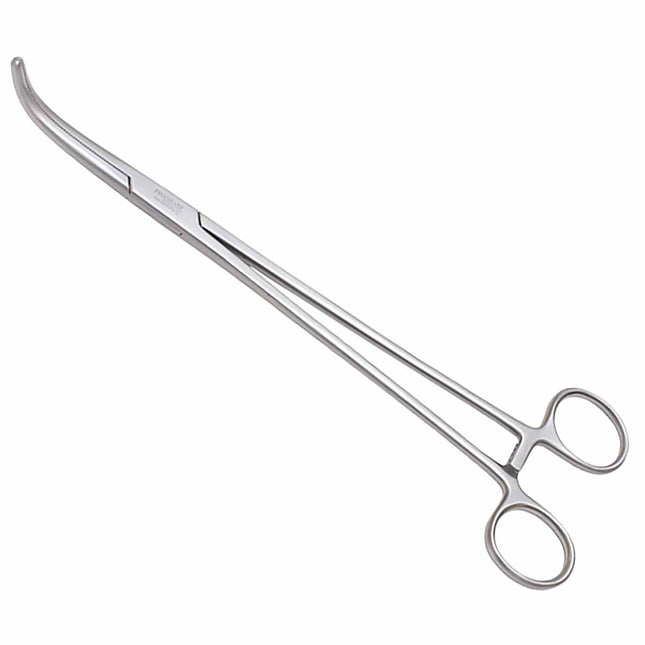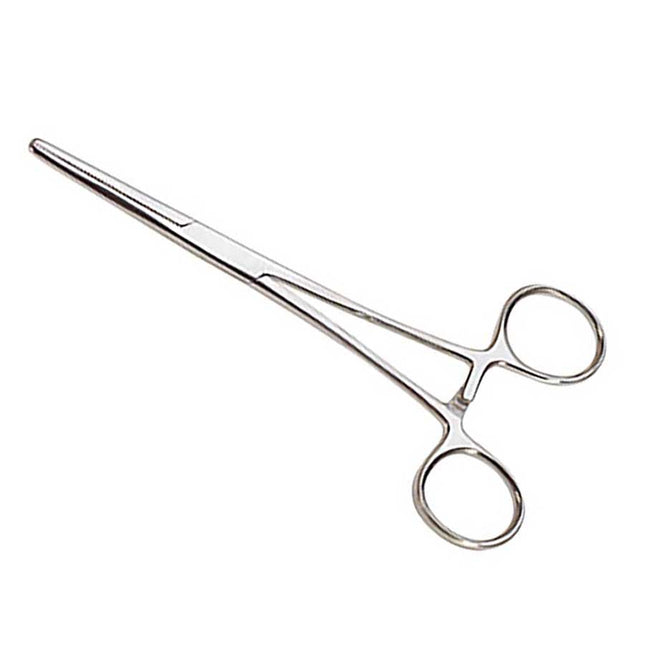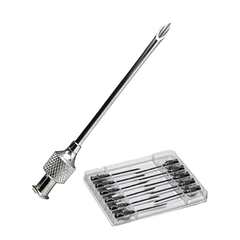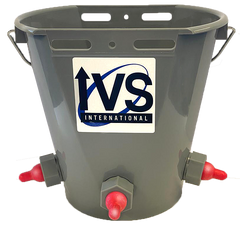Popular Categories
Fórceps

6˝ Pinzas curvas
Curved forceps are a vital tool in various medical and non-medical applications due to their unique design that allows them to reach and manipulate objects in hard-to-access areas. The 6-inch curved forceps, for instance, are commonly used in surgical procedures to grasp and hold delicate tissues or compress blood vessels to stop bleeding. Their curved tips provide surgeons with the precision required for intricate tasks. Quality is one of the greatest component in this item. When it comes to surgical instruments; high-grade stainless steel is the preferred material as it ensures durability, reliability, and the ability to withstand repeated sterilization without degradation. In addition to their medical use, these forceps have found utility in fields such as fishing, where they are used for removing hooks, and in hobbies and crafts for their precision gripping capability. The multipurpose nature of these forceps, coupled with their robust construction, makes them an indispensable tool in both professional and personal settings Curved forceps are incredibly versatile instruments used across a variety of fields. In medical settings, they are essential for surgical procedures, aiding in the delicate manipulation of tissues, securing sutures, and providing precision in tight spaces. Dentists also use them to remove small fragments within the mouth. Beyond healthcare, curved forceps serve as a useful tool for biologists and botanists for plant propagation and sample handling. In the realm of electronics, they assist in holding small components during assembly or repair. Hobbyists, especially those involved in model-building or jewelry-making, appreciate the precision grip of curved forceps for intricate work. Even in everyday life, they can be handy for tasks that require a careful touch, such as extracting splinters or handling tiny objects that are difficult to grasp with fingers alone. Their commonality lies in their ability to provide a firm grip and precise control in situations where fingers are too large or clumsy to be effective Proper cleaning and sterilization of curved forceps are crucial for maintaining their functionality and ensuring safety. Begin by rinsing the forceps in warm water to remove any immediate debris. Clean them with a soft brush and a neutral pH detergent to prevent corrosion or staining. After cleaning, rinse thoroughly under running water, making sure to open and close any hinged parts to wash out hinge areas. For sterilization, autoclaving is a common method for its effectiveness against a broad range of microorganisms. However, for forceps that cannot withstand high temperatures, chemical sterilants like ethylene oxide or hydrogen peroxide plasma can be used, as they are less harsh and can reach intricate parts of the forceps. It's essential to follow instructions for both cleaning and sterilization to ensure the longevity and safe use of the forceps. Always inspect the forceps after cleaning for any damage or wear and ensure they function correctly before their next use
$8.99

6 ˝ Forceps Arteriales
6 " Straight Forceps are a versatile tool in medical procedures, known for their precision and reliability. These forceps are commonly used in surgical settings for grasping, holding, and manipulating tissues with minimal trauma. The straight design allows for better visibility and control, making them suitable for a variety of surgical applications. Quality is critical when it comes to surgical instruments, and these forceps are typically made from high-grade stainless steel, offering durability, resistance to corrosion, and ease of sterilization. The design may feature serrated jaws for a secure grip, and the non-locking type requires manual pressure to hold tissues, which can be advantageous in delicate procedures. With advancements in medical technology, the use and quality of these forceps have evolved, ensuring they meet the rigorous standards of modern medicine. They are particularly useful in surgeries where delicate tissue manipulation is required, such as in laparotomy, intestinal, and gynecological surgeries. Their design allows for the careful handling of tissues, which is crucial in vascular surgery to prevent damage to blood vessels. In urology, these forceps are instrumental for procedures that involve delicate operations within confined spaces. The straight forceps are also favored in gastrointestinal surgeries, where they assist in the atraumatic handling of bowel tissues, as noted in the use of Babcock forceps. The quality and functionality of these forceps make them indispensable tools in the operating room, reflecting the advancements in surgical techniques and instrument design. Straight forceps offer several advantages over their curved counterparts, particularly in terms of visibility and accessibility. They are designed for use in open surgical sites where they can easily reach and clamp blood vessels and tissues. The straight design provides a clear line of sight and control, which is essential during precise surgical procedures. Additionally, straight forceps are beneficial for clamping larger vessels and tissues that are easily accessible, as they do not require the additional maneuvering that curved forceps might need in confined spaces. However, curved forceps have their own advantages, such as providing better access and control in deep or narrow body cavities. Ultimately, the choice between straight and curved forceps depends on the specific requirements of the surgical procedure and the anatomy of the area being operated on Made out of Stainless Steel these artery forceps with a locking mechanism are designed to grasp and hold an artery or surrounding tissue.
$8.99









